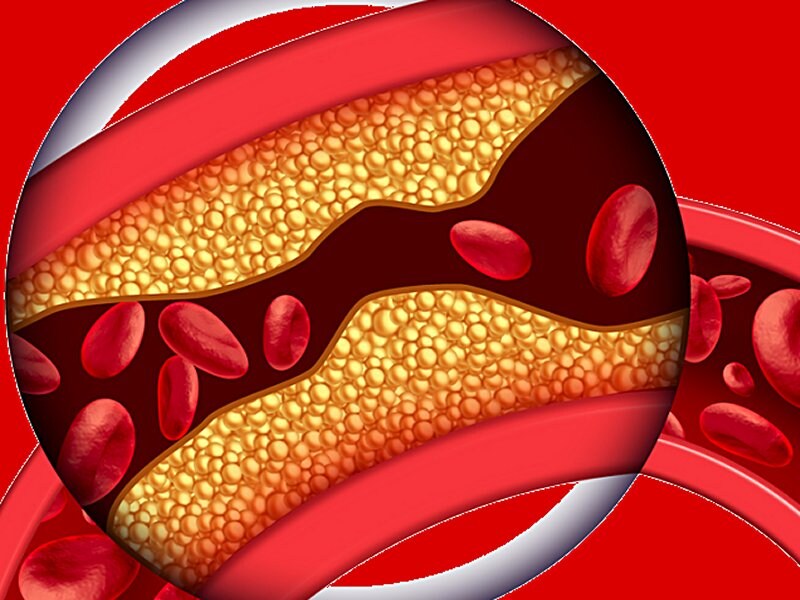Coronary Calcium Adds to Framingham to Spot Risk in Young Cohort
Marlene Busko
June 28, 2016
RELATED LINKS
 ACS Patients on Statins Less Likely to Have High-Risk Plaque
ACS Patients on Statins Less Likely to Have High-Risk Plaque High-Risk Plaque Predicts ACS in ER Patients With Chest Pain
High-Risk Plaque Predicts ACS in ER Patients With Chest Pain
My Alerts
You have already selected “Cardiovascular Risk Management” for My Alerts
RELATED DRUGS & DISEASES
Primary and Secondary Prevention of Coronary Artery Disease
CT Scan of the Temporal Bone
Coronary Artery Atherosclerosis
ORLANDO, FL — In a 15-year registry study of more than 2000 asymptomatic 27- to 45-year-olds, the risk of all-cause mortality was more closely predicted by looking at coronary artery calcium (CAC) score than by looking only at the Framingham score[1]. In a third of individuals, CAC scores changed the level of risk prediction.
The CAC score provided an improved classification of risk compared with the Framingham risk score, which tends to underestimate risk in young- to middle-aged adults, said Dr Donghee Han (Weill Cornell Medical College, New York, NY), who presented these findings at the Society of Cardiovascular Computed Tomography (SCCT) 2016 Annual Scientific Meeting.
The study is based on registry data, which did not specify the cause of death. However, it does provide insights that could improve treatment and outcomes in young patients without symptoms who may still be concerned about their cardiovascular risk, Han told heartwire from Medscape. It suggests that patients classified as high cardiovascular risk by both Framingham and CAC scores might be more adherent to statin therapy and more motivated to make lifestyle changes, he noted. Other young patients with a low Framingham risk score might be more reassured of their current low risk of a cardiac event if they also have a CAC score of zero.
“The prevalence of coronary artery disease is very high, and we are seeing it at an earlier age than in prior generations,” session moderator Dr Mona Bhatia (Fortis Escorts Heart Institute, New Delhi, India) told heartwire. This may be because of genetics, stress levels, the food that people eat, or the sedentary lives that they lead, she speculated.
Thus, “it’s very important that if there is a possibility of cardiovascular disease in young individuals, and whenever we have even the slightest doubt, we have the possibility of imaging them,” Bhatia continued. A CT scan is extremely noninvasive, and if it shows the presence calcified plaques, “there may also be some noncalcified plaques with it, which are often the cause of plaque rupture and acute MI or a major coronary event,” she noted.
70% Had a Family History of Premature CAD
CAC scores are a rapid, accurate, inexpensive way to classify cardiovascular risk in asymptomatic individuals, and a coronary CT scan does not use contrast agent or a high radiation dose, Han noted.
Thus, the researchers aimed to see whether CAC scores would improve the prediction of all-cause mortality beyond that gleaned from the Framingham risk score in younger patients.
They identified 2283 asymptomatic patients who were 27 to 45 years old and had a CT scan to determine CAC from 1996 to 1999 at the Tennessee Heart and Vascular Institute, Hendersonville. There were more men (69%), and most (70%) had a family history of premature CAD. More than half (59%) had dyslipidemia; about one in four were smokers (39%) or had hypertension (40%); and a few (7%) had type 2 diabetes.
Patients were classified as having a very low (<5%), low (5%–10%), intermediate (10%–15%), or high (>15%) Framingham risk score, and they were also classified as having a CAC score of 0, 1–100, 101–400, or >400.
During a mean follow-up of 15 years, 132 individuals (5.6%) died (all causes). The rate of death was similar in men and women and ranged from 3% of patients with no CAC at baseline to 19% of patients in the highest CAC-score category.
| CAC score | 0 | 1–100 | 101–400 | >400 | P |
| Patients, n | 1404 | 580 | 186 | 113 | — |
| Deaths, n (%) | 47 (3) | 44 (8) | 20 (11) | 21 (19) | <0.001 |
Compared with having a CAC score of 0, a CAC score of 1–100, 101–400, and >400 was associated with a 2.3-fold, 3.4-fold, and 5.9-fold increased rate of death during follow-up, respectively, after adjustment for cardiac risk factors.
The C statistic, or accuracy of the Framingham risk score for predicting mortality during follow-up, was 0.56. When the CAC score was added to the Framingham risk score, the C statistic for both scores together was 0.67 (P for difference <0.001). The data showed similar added predictive benefit in both men and women (both P for difference <0.05).
Importantly, the CAC score correctly reclassified 33% of the study population, Han noted.
Han and Bhatia have no relevant financial relationships.
